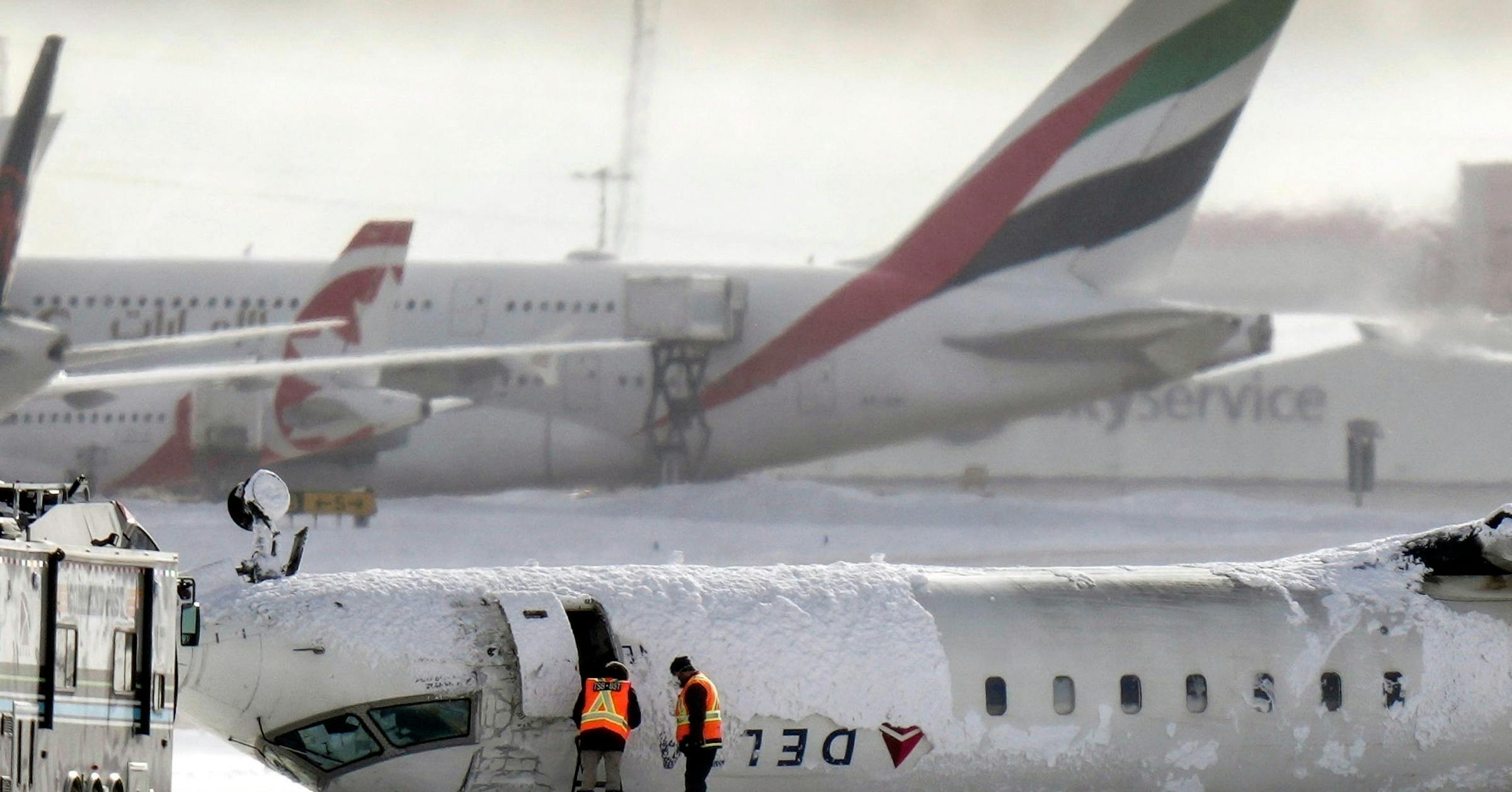
A Harrowing Descent: Unraveling the Mystery of the Delta Crash in Toronto
The recent Delta Air Lines flight crash landing in Toronto has sent shockwaves through the aviation community, leaving investigators and the public alike grappling with the sequence of events that led to such a dramatic and unsettling incident. The flight, originating from the Twin Cities, experienced a rapid and unexpected descent, culminating in a dramatic crash landing that left the aircraft overturned on the runway. While the full picture remains under investigation, preliminary reports paint a chilling picture of a near-catastrophic failure.
The initial accounts suggest a rapid loss of altitude, far exceeding the normal descent rate for an aircraft approaching landing. This rapid descent, according to early investigations, appears to have been a key factor contributing to the subsequent events. While the precise cause of this sudden descent is yet to be definitively determined, investigators are meticulously examining various possibilities, from mechanical malfunctions to unforeseen weather conditions.
A critical aspect of the investigation focuses on the aircraft’s landing gear. Reports indicate that a portion of the right landing gear malfunctioned, potentially hindering the aircraft’s stability during the crucial final moments of the approach. The failure of this critical component likely compounded the challenges faced by the pilots in attempting a safe landing, forcing them into an emergency situation.
The bravery and skill of the flight crew under immense pressure cannot be overstated. Preliminary reports highlight the pilots’ extraordinary efforts to maintain control amidst the rapidly unfolding emergency. They reacted swiftly and decisively, attempting to mitigate the unfolding disaster and ultimately guiding the plane to a point of impact that, while resulting in a dramatic inversion, minimized the potential for even greater devastation.
The investigation is now focusing on the intricate details that could provide crucial answers. Engineers are meticulously examining the aircraft’s flight data recorders (“black boxes”), which contain invaluable information regarding the aircraft’s performance leading up to the accident. This data will be crucial in piecing together a comprehensive timeline, providing a moment-by-moment account of the flight’s final moments.
Furthermore, the investigation is looking into several potential factors. A thorough examination of the aircraft’s maintenance records will help ascertain whether any pre-existing mechanical issues contributed to the accident. Similarly, weather data is being scrutinized to determine if any adverse weather conditions, such as strong winds or unexpected turbulence, played a role in the events leading up to the crash. The meticulous examination of the landing gear itself, including a detailed analysis of its components and functionality, will be critical in understanding the potential failure and its implications.
While the investigation is still in its preliminary stages, the initial findings highlight the complex interplay of factors that can contribute to an aviation incident. The crash underscores the critical importance of rigorous maintenance, comprehensive pilot training, and continued advancements in aviation safety technology. As investigators continue their work, the aviation community awaits their findings with a sense of urgency and a hope for a thorough understanding of the events that unfolded on that fateful flight, leading to valuable lessons that can enhance future aviation safety measures. The ultimate goal is not just to understand what happened, but to prevent similar tragedies from occurring in the future.



Leave a Reply